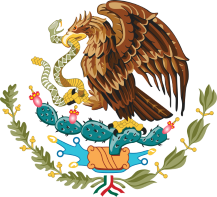Mexico: Government
Key Figures
- Chief of State:
- President Andres Manuel Lopez Obrador
- Head of Government:
- President Andres Manuel Lopez Obrador
Overview
- Government Name:
- United Mexican States
- Constitution:
- Formed: 1918; Sets out social rights and displays profound changes in Mexican political philosophy in comparison to previous Mexican Constitutions.
- Government Type:
- Federal Republic

Index of Economic Freedom
Country Risk Rating
Government Branches
| Main Powers | Election Process | Election Cycle 1 | |
|---|---|---|---|
| Executive | The president elects various government officials, acts as commander-in-chief, negotiates foreign treaties, may veto laws, and introduces bills into congress for their consideration. |
Elected by plurality vote. |
6 years |
| Judicial | Highest federal court. |
Judges proposed by the President and confirmed by the Senate. |
15 years |
| Legislative | The Senate addresses all matters concerning foreign policy, approves international agreements, and confirms presidential appointments. The Chamber of Deputies has the right to pass laws, impose taxes, declare war, approve the national budget, approve or reject treaties and conventions made with foreign countries, and ratify diplomatic appointments. |
Congress of the Senate has 96 members elected by plurality vote in multi-member constituencies, and 32 members elected through a closed-list proportional representation system. Chamber of Deputies consists of 300 members elected by plurality vote in single-member constituencies, and 200 members elected through a closed-list proportional representation system. |
3 years |
Regional Trade Blocs
International Organization Participation [2]
Environmental Agreements [3]
Tax Information [2]
- Tax Authority:
- Ministry of Finance and Public Credit
- Tax Name:
- VAT
Sources:
- ElectionGuide http://www.electionguide.org/
- EY, http://www.ey.com
- CIA World Factbook, https://www.cia.gov/the-world-factbook/
- U.S. Bilateral Relations Fact Sheets http://www.state.gov/r/pa/ei/bgn/


